Vegetables that start with ‘P’ are a diverse collection that includes both common and rare varieties, ranging from everyday staples to more exotic types that may only be found in specialized markets or certain regions.
This group includes a range of types, such as leafy greens, root vegetables, squashes, and pods. The taste of these P-fronted food items can vary widely, from the peppery bite of radishes to the sweet, earthiness of pumpkins.
Here’s a quick guide to some top vegetables that start with P. And don’t worry, I’ll include a list of well-loved fruits beginning with P right at the end.
Let’s get started now!
23 Well-known Vegetables that Start with P with Filters
Presented below is a list of 23 vegetables that start with the letter P, organized by their popularity. The filter helps you find exotic veggies, ones that count as both fruits and vegetables, those great for meals, drinks, or just to add a little extra to your dish.
Potato
- For Dishes
Potato is a starchy tuber of the plant Solanum tuberosum and is a staple food in many parts of the world.
In cooking, potatoes can be boiled, baked, fried, and mashed, making them a fundamental ingredient in dishes ranging from comforting mashed potatoes to crispy French fries. The taste of a potato is relatively mild with a creamy texture.
Potatoes come in various shapes and sizes, typically round or oval, and there are numerous famous varieties, including Russet, Yukon Gold, and Red Potatoes.
Potatoes are a cornerstone of Western cuisine but have found their way into the culinary traditions of cultures around the world, from Indian aloo gobi to Spanish patatas bravas.
Pepper
- For Dishes
- Fruit Vegetables
Pepper refers to a wide range of spicy to sweet fruits from plants in the Capsicum family. In cooking, peppers can be used fresh, dried, or powdered, and they play a crucial role in dishes such as Mexican salsas, Indian curries, and Thai stir-fries.
The taste of peppers can vary widely from the fiery heat of a habanero to the sweet crunch of a bell pepper. Their texture also varies, with some being crisp and juicy, while others are dry and powdery when ground into spices.
Peppers come in an array of shapes, from the small, round cherry peppers to the long, slender cayenne peppers. famous varieties include the jalapeño,bell pepper, and carolina reaper.
Pumpkin
- For Dishes
- Fruit Vegetables
Pumpkin is a versatile winter squash known for its smooth, ribbed skin and deep orange color, though it can also be white, green, or other colors. It ranges in size from small to giant varieties.
Pumpkins are widely used in North American cuisine, especially for making pumpkin pie, a traditional Thanksgiving dish.
They have a sweet, slightly nutty taste and a creamy texture when cooked. Pumpkins are also carved into jack-o’-lanterns for Halloween decorations in the U.S.
Peanut
- For Dishes
Peanut, or Arachis hypogaea, is a legume crop grown for its edible seeds, known as groundnuts, goobers, or monkey nuts. Despite being called a nut, peanuts are actually legumes. They are native to South America but grown worldwide.
Peanuts are used in various cuisines, notably for making peanut butter. They have a nutty flavor and can be eaten raw, roasted, or boiled. Peanut oil is popular for frying due to its high smoke point.
Pea
- For Dishes
- Fruit Vegetables
Peas are small, green seeds or pods from the Pisum sativum plant. They’re a cool-season crop, used fresh, frozen, or canned in various cuisines. Peas have a sweet taste and soft texture when cooked.
Varieties include garden peas (shelled for seeds), snow peas (eaten whole while unripe), and snap peas (consumed pod and all, more mature than snow peas).
Parsley
- For Dishes
- For Garnish
Parsley is a bright green, leafy herb native to the central Mediterranean. It’s used worldwide in cooking for its fresh, slightly peppery flavor. There are two main types: curly leaf (often used as a garnish) and flat leaf (preferred for its stronger flavor).
Parsley can be used both fresh and dried, but fresh parsley is preferred for its brighter flavor. It’s commonly used as a garnish on dishes, incorporated into sauces like the Italian salsa verde, or blended into pesto and other herby spreads.
Plum Tomatoes
- For Dishes
- Fruit Vegetables
Plum tomatoes, often referred to as roma tomatoes, are a type of tomato known for their elongated, egg-like shape. They have a firm flesh and fewer seeds compared to other tomato varieties, making them ideal for cooking.
Plum tomatoes are widely used in Italian cuisine, particularly in making tomato sauces, pastes, and sun-dried tomatoes due to their low moisture content and sweet, tangy flavor.
They hold their shape well when cooked, which also makes them suitable for baking and grilling. The texture of plum tomatoes is meaty and dense. Famous varieties of plum tomatoes include ‘San Marzano’ and ‘Roma VF’.
Pinto Bean
- For Dishes
Pinto beans are a staple legume in various cuisines, particularly in Mexican and Southwestern American cooking. They are known for their creamy texture and earthy flavor when cooked.
These beans are medium-sized, oval-shaped, and have a speckled brown and beige appearance, which becomes a uniform pinkish-brown upon cooking.
Pinto beans are incredibly versatile in the kitchen; they can be mashed for refried beans, used whole in soups and stews, or included in chili recipes.
The taste of pinto beans is mildly nutty, and they offer a satisfying, creamy texture that complements both meat-based and vegetarian dishes. Among the varieties, the traditional pinto bean is the most common.
Pearl Onions
- For Dishes
- For Garnish
Pearl onions are small, round, and mildly sweet onions, known for their petite size and white, yellow, or red skins. They are a popular choice in French cuisine, especially for dishes like coq au vin and beef bourguignon.
In cooking, pearl onions are often pickled, roasted, or glazed, serving as a sweet and tender addition to a variety of dishes. Their texture can range from firm when lightly cooked to tender and creamy when fully cooked.
The taste of pearl onions is milder and sweeter than larger onions. Famous for their use in pickling, pearl onions are also a staple in stews, braises, and as a garnish.
Parsnip
- For Dishes
Parsnip is a root vegetable closely related to carrots and parsley. It is long, tapered, and usually creamy white in color. Parsnips are cherished for their sweet, nutty flavor. When cooked, parsnips offer a soft, almost creamy texture.
They are commonly used in European cuisine, especially in soups, stews, and as a roasted side dish. Parsnips can be eaten raw, where they have a crisp, slightly spicy taste, but are most often cooked to bring out their natural sweetness.
Famous varieties of parsnips include the ‘Hollow Crown’, known for its excellent flavor and texture, and the ‘Gladiator’, praised for its disease resistance and suitability for long storage.
Pea Vine
- For Dishes
- For Garnish
Pea vine, or pea shoots, are the tender leaves and shoots of the pea plant, harvested from specific varieties of peas, such as the snow pea or garden pea.
They are a delicacy in Chinese and other Asian cuisines, appreciated for their delicate, slightly sweet pea flavor and crisp texture. Pea vines are used fresh in salads, lightly cooked in stir-fries, or as a garnish, adding a fresh, green flavor to dishes.
Pigeon Pea
- Exotic
- For Dishes
Pigeon pea is a perennial legume from the family Fabaceae, originating from the Old World tropics. It’s widely cultivated in tropical and subtropical regions globally, especially in South Asia, Southeast Asia, Africa, and Latin America.
Pigeon peas are versatile in their culinary uses, often featured in dishes like dals and stews. They have a nutty flavor and a grainy texture when cooked.
Pak Choi
- For Dishes
Pak choi, also known as bok choy or Chinese cabbage, is a type of Chinese leaf vegetable belonging to the mustard family. It has crisp, tender stalks and mild, slightly sweet leaves, making it a popular ingredient in Asian cuisine, particularly in Chinese dishes.
Pak choi can be cooked in various ways, including steaming, boiling, stir-frying, and can also be eaten raw in salads. Its mild flavor makes it a versatile vegetable that pairs well with a wide range of ingredients and spices.
Purslane
- For Dishes
- For Garnish
Purslane, also known as little hogweed or pursley, is an annual succulent in the Portulacaceae family. It is characterized by its smooth, reddish, mostly prostrate stems and succulent leaves, which are clustered at stem joints and ends.
The plant produces small yellow flowers that open only on sunny mornings. It is edible and can be used in salads, soups, and stews, offering a slightly sour and salty flavor.
Pimento
- For Dishes
- For Garnish
- Fruit Vegetables
Pimento, also known as pimiento or cherry pepper, is a variety of large, red, heart-shaped chili pepper that measures 3 to 4 inches long and 2 to 3 inches wide. The flesh of the pimento is sweet, succulent, and more aromatic than that of the red bell pepper.
Pimentos are commonly used stuffed into green olives, in pimento cheese, and to add flavor to dishes without adding heat. They are also available ground and are used in making paprika, contributing to its sweet flavor.
Pimentos are widely used in Spanish, Portuguese, and Caribbean cuisines, among others.
Pointed Cabbage
- For Dishes
Pointed Cabbage, also known as hispi, sweetheart, or sugarloaf cabbage, is a variety of cabbage with a distinctive elongated shape, resembling a cone. It has large, delicate leaves that range in color from yellow to blue-green.
Pointed cabbage is known for its tender texture and a flavor that is milder and more delicate compared to common white cabbage. It is versatile in the kitchen, suitable for both raw and cooked preparations, such as in salads, stir-fries, and as a steamed side dish.
Pointed cabbage is particularly popular in the UK and other parts of Europe, where it is appreciated for its early growing season and delicate flavor.
Pitwaa
- Exotic
- For Dishes
Pitwaa is identified as a form of the roselle plant (Hibiscus sabdariffa) known as Gongura in Telugu, which is grown for its edible leaves in India and other countries. These leaves are used in South-Central Indian cuisine to impart a tart flavor to various dishes.
Gongura comes in two varieties, green-stemmed and red-stemmed, with the red-stemmed variety being more sour.
Gongura is a key ingredient in Andhra cuisine, where it is made into a popular chutney and used in dishes like Gongura Pappu (lentils), Gongura Mamsam (meat), and Gongura Royyalu (shrimp).
Palm Heart
- Exotic
- For Dishes
- For Garnish
Palm heart, also known as heart of palm, is a vegetable harvested from the inner core of certain palm trees. It is considered a delicacy in many parts of the world, particularly in Latin American cuisines.
Palm heart has a delicate flavor and texture, often compared to artichokes or white asparagus. It is commonly used in salads, both fresh and canned, and can also be cooked and used in various dishes, including stews and stir-fries.
Pandan
- Exotic
- For Beverages
- For Dishes
Pandan is a tropical plant known for its fragrant leaves, widely used in Southeast Asian cuisine for flavoring. The leaves impart a unique, aromatic essence to dishes, reminiscent of vanilla with floral and grassy notes.
Commonly used in rice dishes, desserts, and cakes, pandan leaves can be tied in knots and added to cooking liquids to infuse their flavor, then removed before serving. The plant is also used to make a green food coloring for traditional sweets.
In addition to its culinary uses, pandan leaves are sometimes steeped in coconut milk, which is then incorporated into various recipes, enhancing both the aroma and taste of the dish.
Paracress
- Exotic
- For Dishes
- For Garnish
Paracress is a species of flowering herb in the family Asteraceae. It’s commonly referred to as the toothache plant, Szechuan buttons, buzz buttons, or electric daisy due to its unique effect on the mouth when consumed.
The plant is small and erect, bearing gold and red inflorescences. Paracress is known for the tingling, numbing sensation it produces, followed by excessive salivation and a cooling sensation in the throat. This effect is attributed to spilanthol, a compound found in the plant.
Paracress is used in small amounts to add a unique flavor to salads and is also used as a flavoring agent in foods, chewing gum, and chewing tobacco. The leaves can be cooked, but they lose their strong flavor and may be used as leafy greens.
Papalo
- Exotic
- For Dishes
- For Garnish
Papalo, or Porophyllum ruderale, is an herb native to Central and South America. It has a strong, pungent flavor that is often described as a mix between cilantro and arugula.
Papalo is used in traditional Mexican cuisine, particularly in salsas and as a garnish for sandwiches and salads. The leaves are broad and bluish-green in color, and the plant is known for its resilience and ability to grow in various conditions.
Puntarelle
- Exotic
- For Dishes
- For Garnish
Puntarelle is a variant of chicory with an elongated shape, characterized by light green stems and dandelion-shaped leaves. Puntarelle shoots, which are harvested when young and tender, have a pleasantly bitter taste.
This vegetable is often used in a traditional Roman salad named after it, where the leaves are stripped and the shoots are soaked in cold water until they curl.
The salad is typically dressed with a mixture of anchovy, garlic, vinegar, and salt, emulsified with olive oil, showcasing the unique flavor and texture of puntarelle.
Pink Bean
- For Dishes
Pink beans are small, pale pink to reddish-brown beans, known for their smooth, creamy texture and sweet, nutty flavor. They are a popular choice in Caribbean and Latin American cuisines, often used in dishes like stews, soups, and rice and beans.
Pink beans are sometimes confused with pinto beans due to their similar size and shape, but they can be distinguished by their color and slightly sweeter taste.
What Are Common Fruits that Start with P?
Check out these five well-known fruits that start with P:
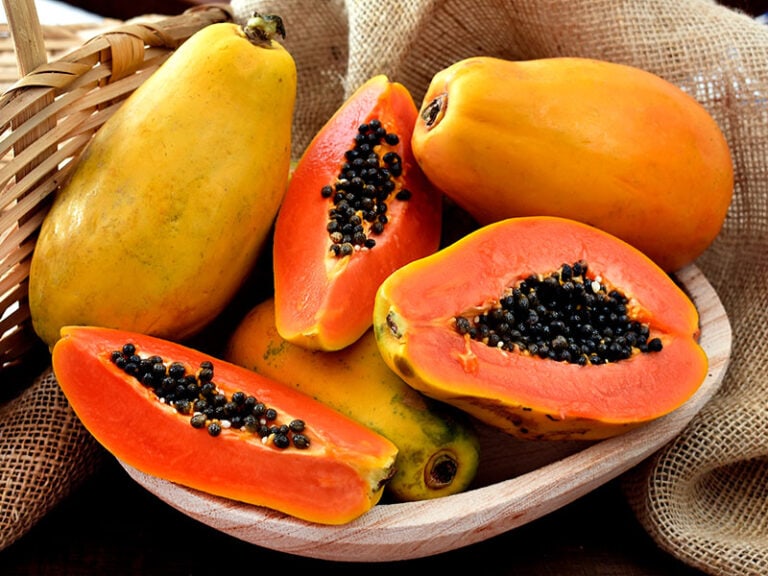
Papaya
Papaya is a tropical fruit known for its sweet taste and vibrant orange color, often eaten fresh or used in beverages and desserts.
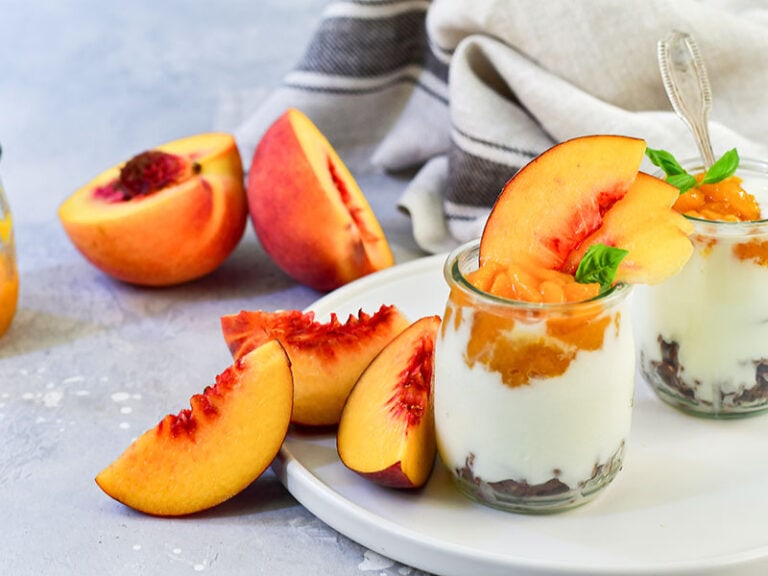
Peach
Peach is a summer fruit with a velvety skin, juicy flesh, and a sweet flavor, popular in many dishes and desserts.
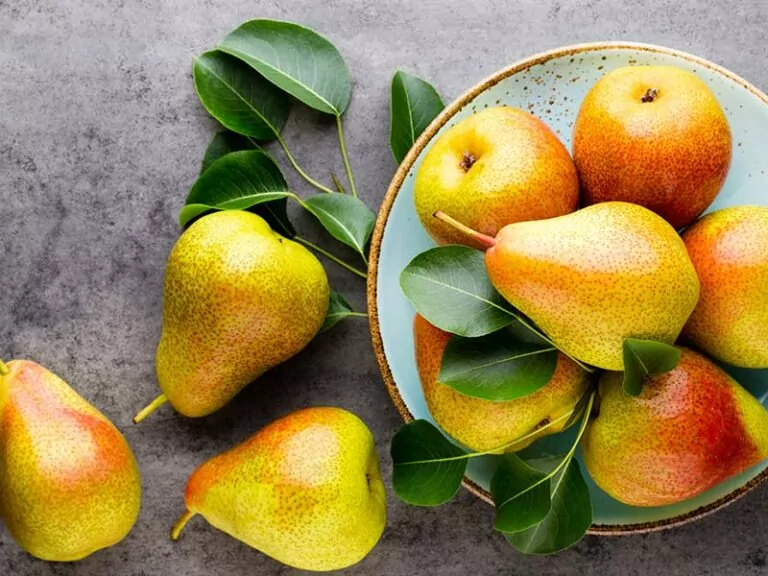
Pear
Pear is a sweet, bell-shaped fruit that comes in many varieties and is enjoyed fresh, canned, or as juice.
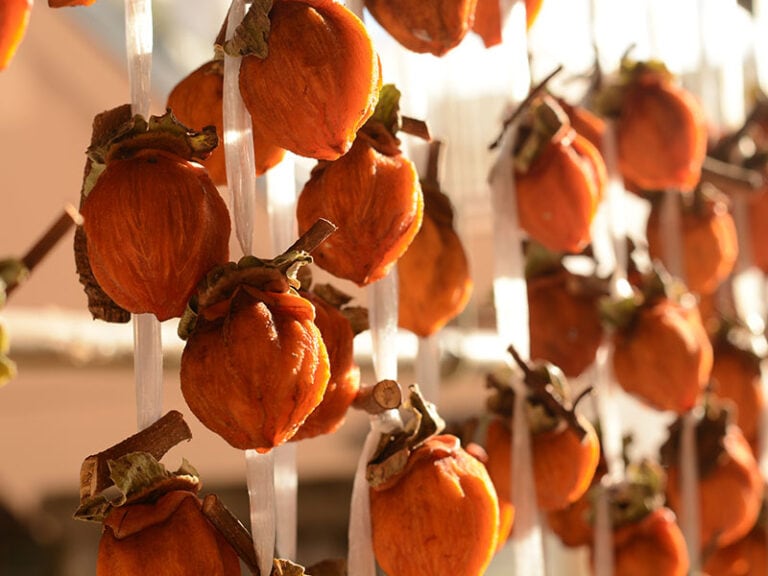
Persimmon
Persimmon is a sweet, honey-flavored fruit with a bright orange skin, enjoyed fresh or dried.
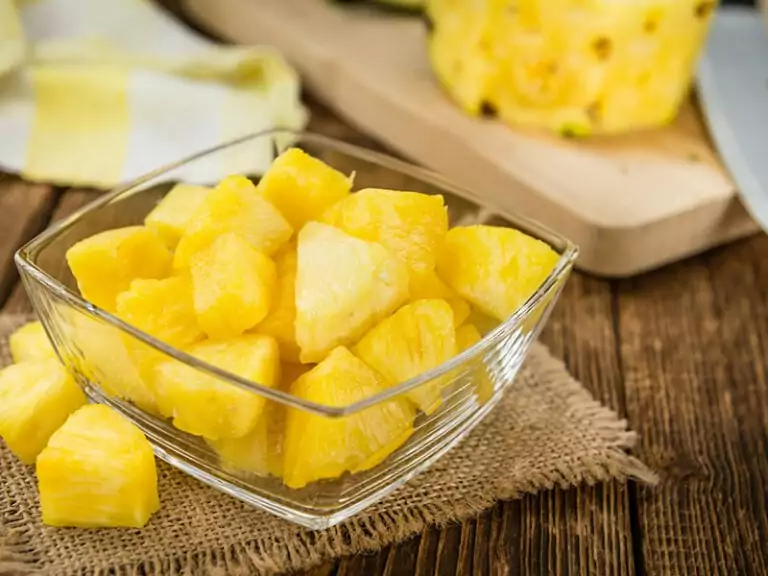
Pineapple
Pineapple is a tropical fruit with a rough, spiky exterior and sweet, tangy flesh, widely used in cooking, baking, and beverages.
This list is just a sample of what’s out there. Plenty more P-fronted fruits are waiting to be found.
Now, I hope you will share your own experiences with these “P” vegetables. What recipes have you crafted with Papaya? Have you ventured into the world of Pea Vines or explored the tingling sensation of Paracress? Let us know in the comments below.
And don’t forget to share the article to other cooking enthusiasts who can learn from this article. You never know who else out there is also curious about vegetables starting with P and other letters as below.


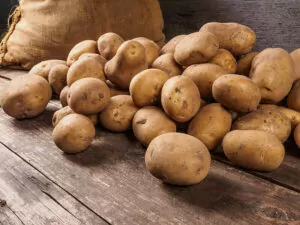
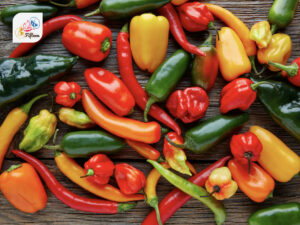
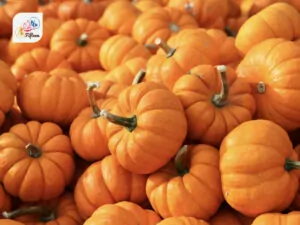
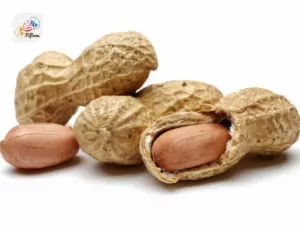
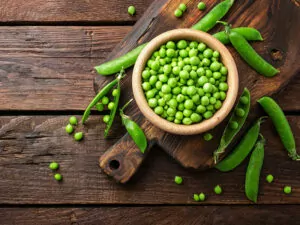
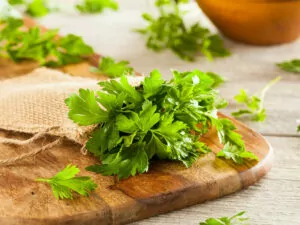
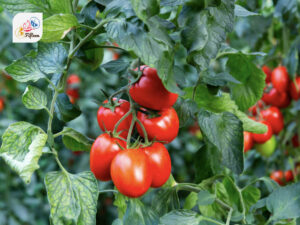
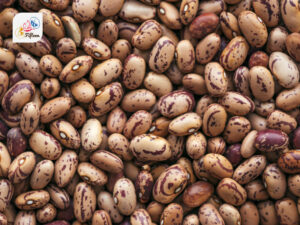
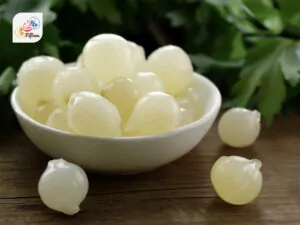
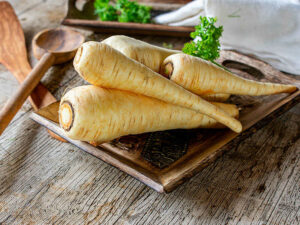
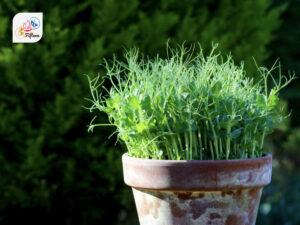
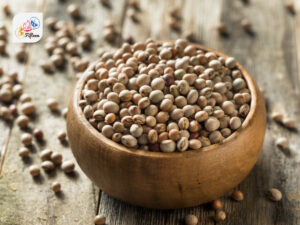
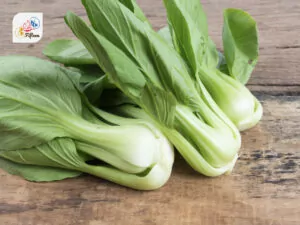
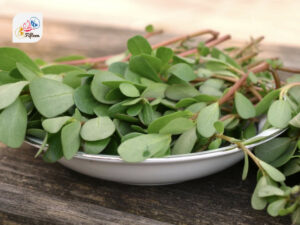
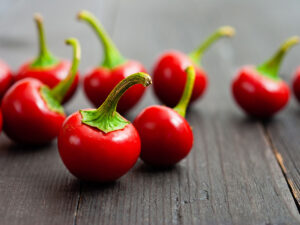
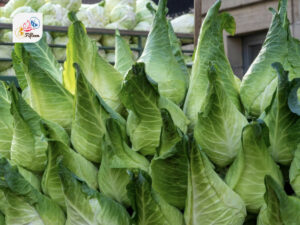
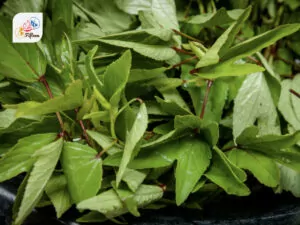
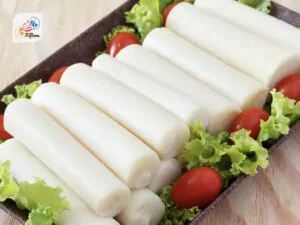
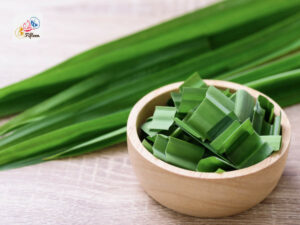
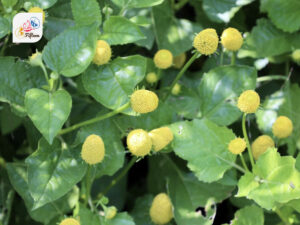
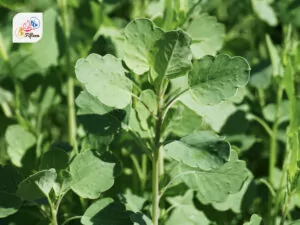
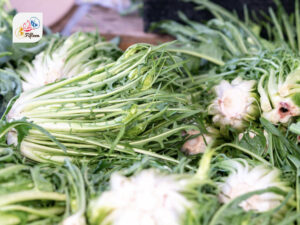
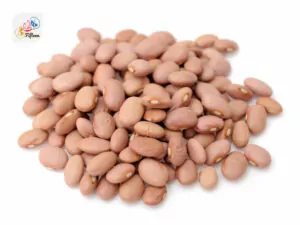
Jamie Scott
Editor in Chief, Senior Content Writer
Expertise
Home Cooking, Meal Planning, Recipe Development, Baking and Pastry, Food Editor, Cooking-video Maker, Western Food Evaluation Expert
Education
Le Cordon Bleu College of Culinary Arts
Local Community College, New York, NY
Jamie Scott is a skilled culinary expert and content creator specializing in Western cuisine. With over 15 years in the culinary field and formal training from Le Cordon Bleu, Paris, Jamie deeply understands how to blend nutrition with delicious flavors. His passion for cooking matches his commitment to making healthy eating accessible and enjoyable.
On Fifteen.net, Jamie brings a fresh perspective to classic dishes and beverages, offering readers insightful recipes, cooking tips, and a fresh view on meal planning that emphasizes taste, health, and simplicity.